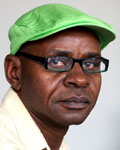Oracle Airtime Sales launches DStv-i
Lorina Botha, OATS' head of sales strategy, said: “DStv-i will enable us to develop an in-depth understanding of DStv viewing patterns by more defined target market groups. It will also help to unlock new and innovative ways to connect with this lucrative upper end market.”
In July 2006, SAARF introduced overnight ratings in order to increase accountability among other media owners and the accuracy of campaign against delivery.
But OATS said the increase of DStv channels and the proliferation of alternative opportunities meant that conventional research methodologies can no longer provide reliable audience measurement cost effectively.
Measurement currency
The company, which is committed to creating a credible audience measurement currency for the buying and selling of DStv airtime, also said that due to the constraints with the existing DStv panel – primarily the inadequacy of sample sizes – it has not been able to consider overnight ratings.
Botha added that DStv-i will be jointly funded by OATS, M-Net, SuperSport and MultiChoice, and modelled on the BSkyB ‘Skyview' panel and Sky New Zealand AMS, both currently operated by TNS in the UK and New Zealand respectively.
Currently, DStv penetration into SA homes amounts to 13%, close to 1.5 million households and a further 2 million households in the rest of Africa. The SA DStv adult universe grew by 500 000 adults year on year and according to a BMR 2005 Report, 77% of DStv viewers are categorised into LSM 9 and 10.
These figures definitely justify the rush and determination of advertisers to grab a huge piece of what is seen as a ‘big-spender market'.
“But first, they want guarantee from media owners that they can for example grab 80% of that market, which the current ratings are unable to provide because they are not stable enough,” Brenda Wortley, who is working hand-in-hand with OATS in this project, told Bizcommunity.com.
“Definitely with the new system that we are about to develop, we will be able to understand who is watching what, regardless of the size.”
Cost
OATS MD Peter McKenzie said: “The problems we face are not unique to SA. Many other pay TV operators have to deal with exactly the same issues of audience fragmentation, inadequate sample sizes, time-shifted and out-of-home viewing and so on.
“It certainly seems to us that, as far as multi-channel homes are concerned, the traditional people meter panel approach to audience measurement is fast becoming redundant.”
Asked by Bizcommunity.com how much a project of such magnitude will cost, McKenzie declined to comment, except to say that DSTV-i is going to be a long, complex and “costly” project.
Bizcommunity.com understands that the new system will first have to be ‘tried' and ‘experimented' with through the single view decoders, and later through the dual view and PVR systems, considered as much more complex.
Paul Haupt of SAARF said: “Worldwide it is found that TAMS panels cannot deliver sufficient information to the buyers and sellers of media time and therefore media owner panels will in future play a role to complement information coming from industry currency research.”
















